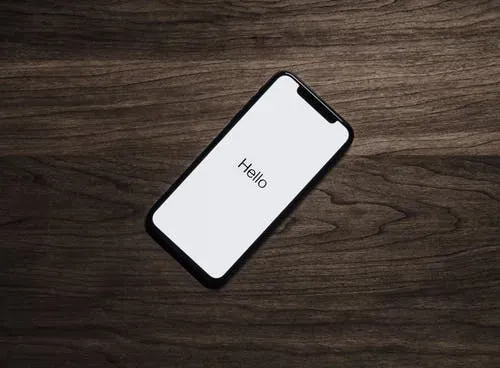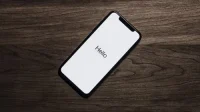A common problem that most iOS users have when setting up their iPhones is that their SIM card is not supported on the iPhone. In most cases, this problem occurs when a person is setting up their used iPhone.
Although there may be several reasons, there are many ways to solve them. Regardless of the carrier or SIM card status, this problem can be fixed by changing a few settings on the iPhone itself.
Why is Sim not supported on iPhone?
There may be several reasons why your SIM card is not supported on your iPhone. If your iPhone does not support your SIM card, this will also mean that it is not recognized or detected by the device.
Also, if your iPhone blocks the carrier, your data, messages, and calls will be blocked. You can either change the SIM or use several other methods mentioned below to bypass the SIM not supported on your iPhone.
How to fix sim not supported on iPhone
- Restart your iPhone
- Reset network settings
- Check if your SIM card is active
- Software update
- Toggle flight mode
- Make an emergency call
- Reinsert the SIM card
- Use the IMEI service
- Check carriers
- Contact Apple Store
1. Restart your iPhone
Rebooting your iPhone can help you resolve the problem that your SIM card is not supported on iPhone. Rebooting your phone is considered one of the best options to update all apps at once and fix crashes.
Usually, rebooting the phone solves such problems. Slide across the power bar while pressing the power and volume up buttons at the same time. After a few seconds, you can restart your iPhone by long pressing the power button.
2. Reset network settings
A stable connection is required to use SIM services. Sometimes when you don’t have enough reception, your SIM card doesn’t work either. This can also be one of the reasons why you are getting the error that is not supported on your iPhone.
However, in addition to this, you may also not be able to use your SIM card due to incorrect settings on your device. Hence, you can follow the steps below to reset your network settings so that your SIM card works.
- Go to settings
- Select “Wi-Fi”and check the network you are connected to.
- Or tap Cellular Data.
- Switch the switch to the “On”position.
There is also a slightly different way to reset network settings.
- Navigate to “General”in settings.
- Scroll down and select Transfer or Reset iPhone.
- Select Reset.
- Select Reset Network Settings, and then enter a password if required.
After that, you can confirm again by clicking “Reset network settings”.
After that, your iPhone will restart and you can check if your SIM card is working and supported. Go to “Settings”of your device and check the signal, because after resetting all network settings, all default settings for cellular and Wi-Fi will be restored.
As a result, you may need to change a few settings and reconnect to WiFi by entering the password again.
3. Check if your SIM card is active.
When using all these methods, it is also very important to check if your SIM card is active or not. After purchasing a new SIM card, the carrier must also activate the services.
If your SIM card is inactive, you can replace it with your carrier. However, if this doesn’t work for you, you must bypass the SIM card and activate with another activation plan.
The easiest way to go through this method is to activate the SIM card when you buy it and verify the same with your carrier. This will avoid unnecessary problems when inserting the card into the iPhone.
4. Software update
Devices must have numerous bugs and glitches. There may be times when rebooting the device over and over again is ineffective.
Also, you may want to check the most recent iOS software because there might be bugs in the system itself. Other features may work correctly sometimes, but certain iPhone features stop working due to missing bug fixes.
Apple releases updates regularly to avoid problems. Sometimes these updates are primarily about new features, with the developers focusing on fixing bugs that are often related to settings. You can easily install the update by connecting to Wi-Fi or Bluetooth to connect to the Internet.
However, if the update includes bug fixes and other resolved issues, you can follow these steps directly.
- Go to the settings menu.
- Select General.
- Scroll to “Software Update”and select it.
- Click Download and Install if an update is available.
- Click “install”after downloading.
You can also choose to install the software immediately or schedule it later.
Updating your software is sometimes seen as the first or last option to resolve these issues. One of the main reasons is that other options are often not checked.
However, if all settings are checked and users are still unable to receive notifications from the app, it is more likely that the iOS software will contain bugs or glitches.
Usually developers solve the problem quickly and send a new update.
5. Switch flight mode
You can change the Airplane Mode settings on your iPhone. Enabling airplane mode will prevent your device from using all SIM card services. However, turning airplane mode on and off can also fix the problem.
To make sure this isn’t the case, you can toggle Airplane Mode on and off in Settings.
6. Make an emergency call
An emergency call will help you use your SIM card or even activate it sometimes. This is one of the reasons why you can use your SIM card again during a call. Since you won’t be able to do this with a regular call, an emergency call is an integral part.
You can either press the home button on your device or activate emergency calls three times. You can dial any emergency number you know, 112/121/911. You can then disconnect the call immediately after the connection.
This method can help you activate the SIM card and get the signal back without resetting the network settings.
7. Reinsert the SIM card
Depending on your iPhone model, you will have to find a SIM tray. For most iPhones, including iPhone 8, X, Xs, XR, SE, 11, 12, and 13, the SIM tray is on the side of the iPhone.
You can take it out with an ejector or a paper clip. After that, remove the SIM card from the tray. Make sure there is no dirt or debris on it and then reinsert it.
Once you do that, you can check if your iPhone supports it or not. Otherwise, you can also reboot your phone, which will reboot the device itself.
If this method does not work for you, you can also try the following methods: through the IMEI service or check with your carrier.
8. Use the IMEI service
One of the best and easiest ways to unlock a SIM card is with the IMEI service. You can access these tools at any time and the only thing you need is to request a service to have your device unlocked at any moment.
However, you should also keep in mind that most of these services are not free. That is why this service can be considered the last resort to solve the problem. However, you do not need to install any application or software.
With this service, you can unlock your device relatively quickly and resolve the Sim Not Support error easily.
9. Check carriers
Another reason why your phone is experiencing the “SIM not supported” error might be because the carrier itself has blocked it. Therefore, in order to unlock your SIM card, you need to contact your carrier.
You may also have to make payments when you try to unlock your SIM card. As soon as the payment is made, the operator will automatically unblock it. However, if you still have time before the end of the contract, you can try other ways to resolve the issue, as they seem to be more favorable.
10. Contact an Apple Store
Regardless of contacting or using the operator’s service, if you still cannot solve the problem. You can contact the Apple Store and visit the nearest store or call them through the official Apple website to help you with the problem.
Conclusion
When your iPhone does not recognize your SIM card, it will lead to several other problems. This is mainly due to the user switching carriers. Unlocking and using a SIM card is very important as it is required to make phone calls, send text messages and more.
However, changing certain settings on your phone or even rechecking your SIM card and unlocking it will help you fix the problem.
FAQ
Why doesn’t my phone support my SIM card?
One of the main reasons why your phone does not support your SIM card could be a carrier lock or certain restrictions on the SIM card. Hence, you should also check the activation policy and the server when trying to resolve this issue. However, it can also be due to a hardware issue, in which case you will have to take it out of the SIM tray and check. This can be done on any model, from iPhone 6s to 13.
How to fix an iPhone that says SIM not supported?
There are several ways to fix an iPhone that says SIM not supported. You can bypass the iPhone’s SIM card and set up the carrier by asking them to unlock it. However, you can also use iTunes to fix this problem by requiring you to connect your phone to your computer via USB. You can also reset network settings or make an emergency call to activate the sim.
How to unlock iPhone SIM card?
To unlock the iPhone’s SIM card, you will need to use your carrier, as they usually have access to it. This applies not only to the old iPhone, but also to the new iPhone. You can use the latest version of iTunes to activate the SIM card, or you can also use the IMEI services.


